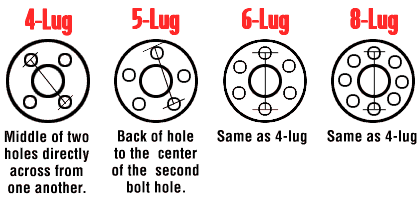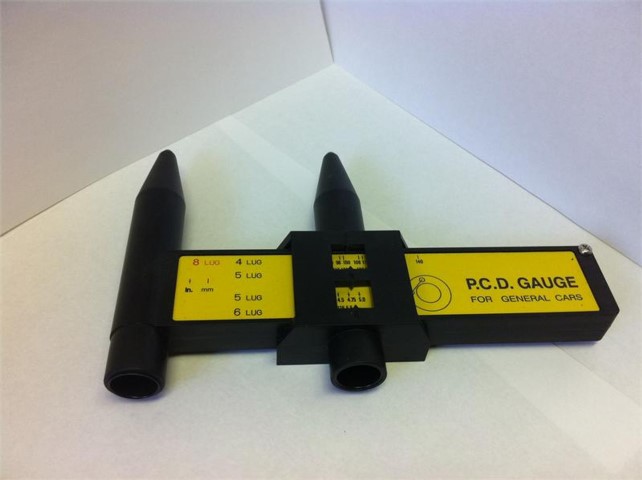 If you’re a vehicle owner or car enthusiast looking to upgrade your ride by installing new wheels or adding wheel spacers, it’s crucial to understand your vehicle’s bolt pattern. Whether you are a seasoned car enthusiast or a novice DIYer, getting a grip on bolt pattern measuring can greatly aid in choosing the perfect aftermarket upgrades for your vehicle. This comprehensive guide will take you through the process of accurately measuring your vehicle’s bolt pattern, ensuring you choose the right wheel spacers for your ride.
If you’re a vehicle owner or car enthusiast looking to upgrade your ride by installing new wheels or adding wheel spacers, it’s crucial to understand your vehicle’s bolt pattern. Whether you are a seasoned car enthusiast or a novice DIYer, getting a grip on bolt pattern measuring can greatly aid in choosing the perfect aftermarket upgrades for your vehicle. This comprehensive guide will take you through the process of accurately measuring your vehicle’s bolt pattern, ensuring you choose the right wheel spacers for your ride.
Section 1: Introduction to Bolt Patterns
Understanding the term ‘bolt pattern’ is the first step towards making informed decisions about wheel spacers. A bolt pattern, also known as a bolt circle, is the diameter of an imaginary circle formed by the wheel lugs’ centers. This measurement is a critical component in determining whether wheels and wheel spacers will fit your vehicle correctly.
A bolt pattern is generally denoted by two numbers, such as 5×114.3. The first number indicates the number of bolt holes or studs on the wheel hub, while the second number, measured in millimeters, denotes the diameter of the circle that passes through the centers of the bolt holes. This standardized notation helps ensure compatibility and fitment across different wheel types and car models.
Section 2: Essential Tools for Measuring Bolt Pattern
Accurately measuring your vehicle’s bolt pattern requires a few simple tools:
- Measuring Tape or Ruler: Preferably one that includes both inches and millimeters, as bolt patterns are usually measured in millimeters.
- Bolt Pattern Gauge: Although not strictly necessary, a bolt pattern gauge is a tool specifically designed to measure bolt patterns and can simplify the process.

Before you start measuring, it’s essential to understand what these tools do and how to use them correctly. Take some time to familiarize yourself with these tools and practice using them to ensure accurate measurements. Section 3: Counting Wheel Lug Nuts or Holes
Identifying the number of lug nuts or bolt holes on your wheel hub is straightforward. Typically, passenger cars and light trucks have four, five, six, or eight lugs. These lugs are evenly spaced around the wheel hub and form a part of the bolt pattern.
It’s essential to count these accurately because if the number of lugs in your new wheel or wheel spacer doesn’t match the number of lugs on your vehicle’s hub, they will not fit. Remember, the correct lug count is the first part of your bolt pattern measurement.
Section 4: Measuring the Bolt Circle Diameter
The process of measuring the bolt circle diameter, or BCD, varies slightly based on the number of lugs.
- For an even number of lugs (4,6,8), the BCD is the center-to-center distance of the lug directly across from one another. Using a measuring tape or a ruler, measure the distance from the middle of one lug to the middle of the lug directly opposite it.
- For an odd number of lugs (5,7), the process is a little more complex. Measure from the center of one lug to the halfway point between the two lugs directly across from it. A bolt pattern gauge comes in handy for these measurements, but a ruler or measuring tape will suffice with careful positioning and handling.
Remember, bolt patterns are usually measured in millimeters. Converting inches to millimeters is simple; multiply the inch measurement by 25.4.
Section 5: Documenting Your Bolt Pattern
After you’ve made the measurements, it’s essential to note your bolt pattern accurately. This measurement will guide your search for wheel spacers that fit your vehicle correctly. For instance, if your vehicle has five lugs and the bolt circle diameter measures 114.3mm, your bolt pattern is 5×114.3.
Section 6: How to Choose the Right Wheel Spacers
Knowing your vehicle’s bolt pattern allows you to confidently select wheel spacers. It’s vital to pick spacers that align with your bolt pattern to ensure a secure, snug fit. But apart from the bolt pattern, there are a few more aspects to consider:
- Spacer Thickness: The width of the spacer determines how far out your wheels will sit from the body of your car. A thicker spacer will provide a wider stance, which may enhance the vehicle’s appearance and stability. However, spacers that are too thick may cause the tires to rub against the fender or suspension components.
- Material: Quality wheel spacers are typically made from billet aluminum, a material known for its strength, light weight, and resistance to corrosion. This ensures the durability and longevity of your wheel spacers.
- Hub-centric vs. Lug-centric: Hub-centric spacers match the hub and wheel perfectly, reducing the chance of vibration. Lug-centric spacers, on the other hand, may not be a perfect fit and could lead to wheel vibration at high speeds.
Remember, while wheel spacers can enhance your vehicle’s aesthetics and performance, incorrect fitment can lead to significant safety issues. It’s essential to install your wheel spacers correctly and inspect them regularly for signs of wear or loosening.
Section 7: Conclusion
Understanding your vehicle’s bolt pattern is an integral aspect of wheel customization. It ensures that you select the correct wheel spacers that not only fit your vehicle properly but also enhance its appearance and performance. By learning how to accurately measure your bolt pattern, you’re equipped to make a safe and satisfying upgrade to your ride, avoiding unnecessary costs or safety issues associated with incorrect fitment.
This comprehensive guide should serve as a valuable resource in your journey towards upgrading your vehicle with wheel spacers, offering the essential knowledge you need to measure your bolt pattern accurately. At Gauge we are custom wheel adapter and wheel spacer specialist. We manufacture and distribute daily. Visit our wheel adapter site at www.adaptitusa.com or give us a call at 317-856-1810. Happy upgrading!










